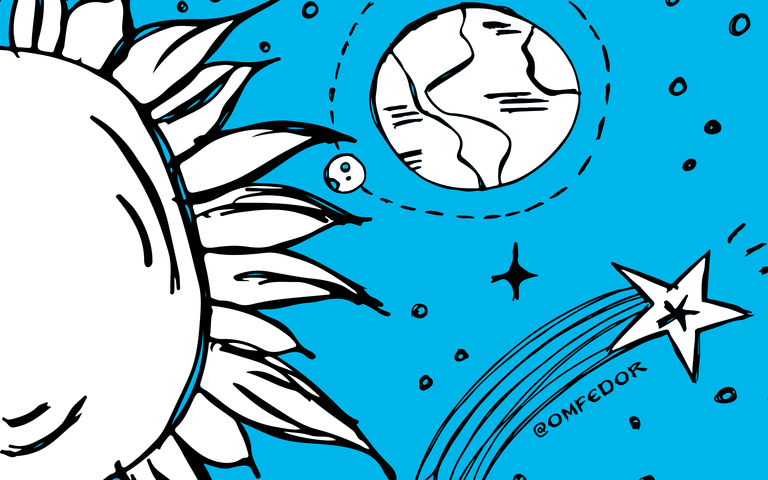
Jyotish (or Vedic Astrology) is just a small part of the vast Vedic literature. The Vedic literature includes 4 Vedas (Rig, Sama, Yajur and Atharva), Puranas (such as Vishnu-purana, Bhagavata-purana, Kalki-purana and so on), Itihasas (Mahabharata and Ramayana) and Vedanta-sutra. Vedanta-sutra is a conclusion, main point of the whole Vedic message written by Vyasadeva who pieced together all parts of the listed Vedic literature.
Sri Vyasadeva, the compiler of the Vedas.
It’s important to note that Vyasadeva didn’t invent the Vedas, he just placed the bricks of the Vedic messages into recognizable for us shape. At the dawn of the Kali era, more than 5000 years ago he compounded all of these epics so that we, modern people could use the Vedic wisdom and achieve perfect life. It’s clear that Vyasadeva was driven by mercy and love to all of us rather than by money or desire to get famous.
Vyasadava is acknowledged by all the philosophical schools in ancient and modern India as the greatest authority in spiritual and material science. And so the Vedic literature doesn’t belong to ordinary literature; it’s cleared from mistakes and if it’s understood and used correctly it can bring true, practical knowledge which is able to improve our life dramatically.
Jyotish is the way of thinking. Not just "astrology".
Jyotish is one of the six Vedangas. All the intelligent people of the past referred to the Vedic civilization learned it so that they could live in harmony with the Universe and avoid unnecessary suffering.
People are prone to have their own model of reality, an idea about the world, their philosophy of life. With a help of Jyotisha they can see the world from a special point of view, where all the phenomena and objects is manifestation of 9 prime energies.

Simply put we share all sensible things into 9 categories. Each of these categories is certain fundamental energy carrying special attributes.
Seeing the world as balance of these 9 energies we’re able to understand relevance, unlike those who cannot see the world this way. Talking about planets technically we’ll talk about the energies which fulfill these planets, about the energies represented by these planets.
When people start Jyotish they can distinctively see the energies in action and read ongoing events like a book. The world starts talking to them in a more understandable language.
Actually, the world has always talked to us, but after learning Jyotish we’ll be able to understand the language of the material reality much better. And so the point of Jyotish is to obtain the vision of prime energies and to comprehend the functioning basic of material phenomena.
Previous lessons

[Drawings © Fedor Chishchin | 2016 | for this Steemit post]
I was always eager to find out more about Vedas, but somehow alway put it into "later" shelf. :)
Thanks for the opportunity!
Only, I did fail to find in the article what those 9 energies are? I even re-read it once thinking that I could miss something... Did I?
Oh, I'm gonna tell about them in all details in my next articles, @aleksandraz! Stay tuned ;)
That was my guess, but I got some doubts as no such promise was made in the article. :D
Thanks, I will! :)
But that was the title of this article. You did spike my interest. I'm gonna go look it up
Nice post, nicely written. Loved the "FOLLOW ME". @omfedor. Keep sharing
Yes, and Quantum science has demonstrated (what the great seers have known for a very long time !) that everything manifest is composed of energy, and that all individual energies interact and are connected with each other.
Awesome.
And so a map of these energies and how they relate to us must be important and useful.
Thanks.
Love Peace & Freedom
That's it. Great that you appreciate this knowledge! :)
This post has been linked to from another place on Steem.
Learn more about linkback bot v0.3
Upvote if you want the bot to continue posting linkbacks for your posts. Flag if otherwise. Built by @ontofractal